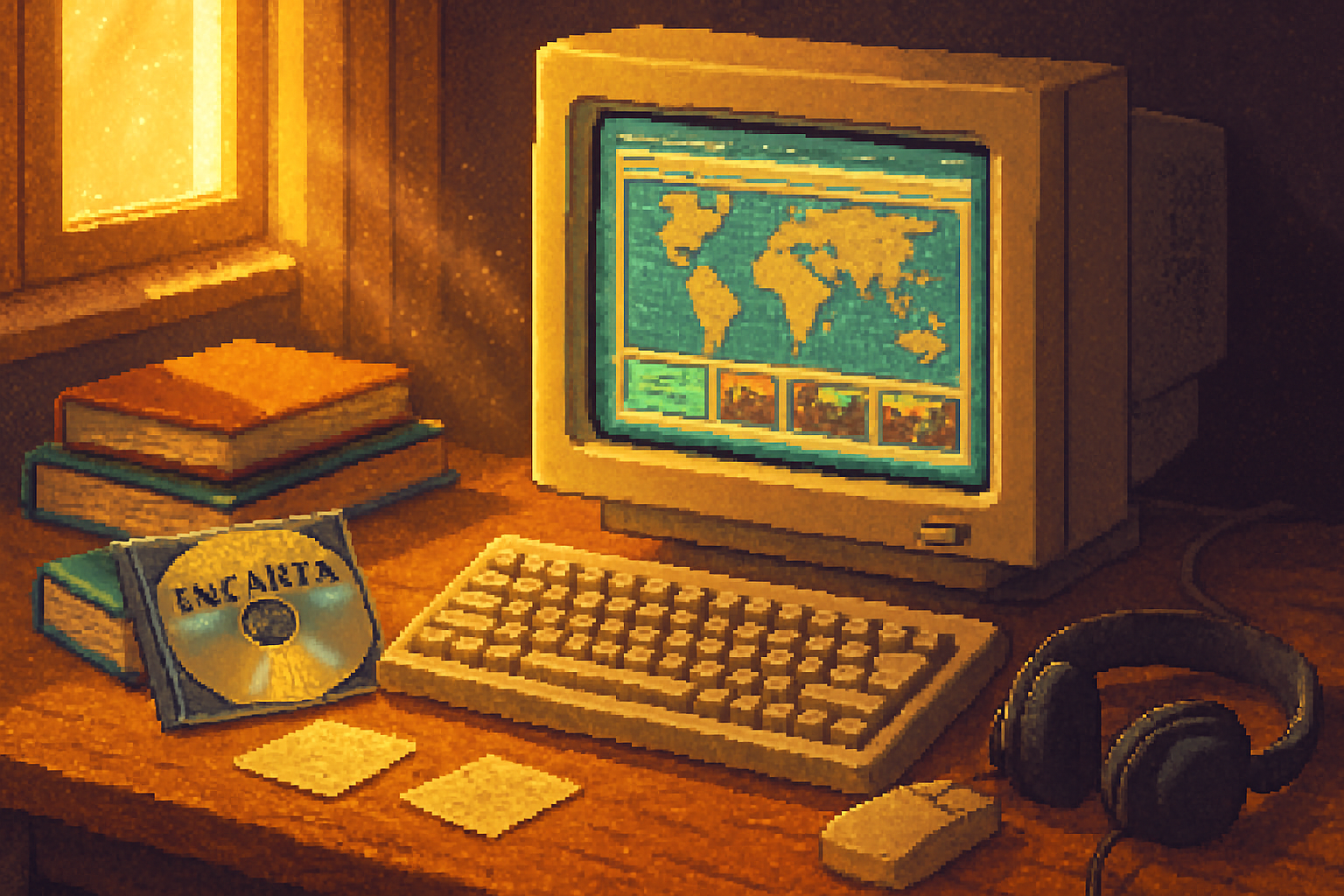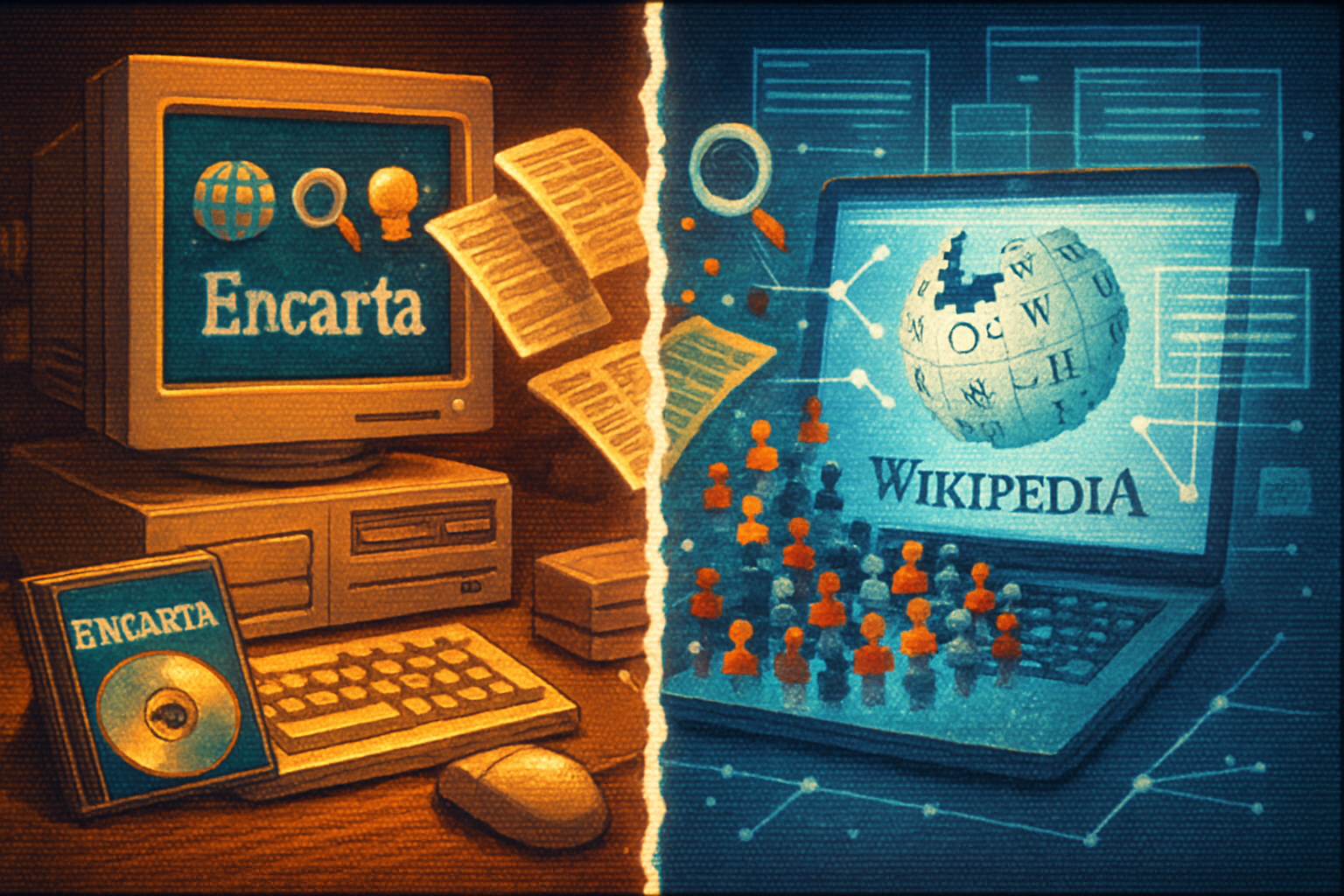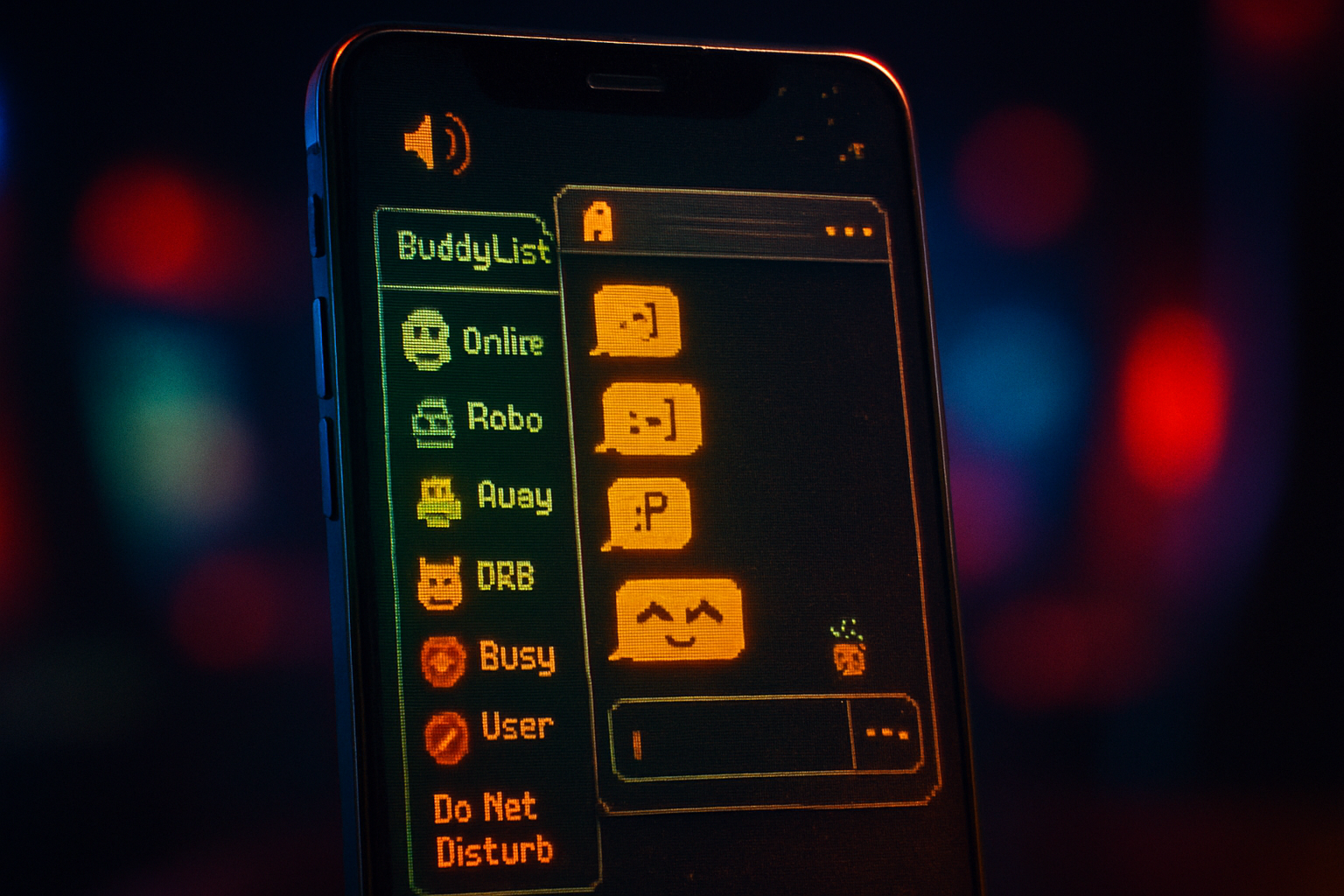· retrotech · 7 min read
The Rise and Fall of Microsoft Encarta: A Digital Time Capsule
Microsoft Encarta was one of the first mass-market digital encyclopedias - a 1990s multimedia marvel that transformed home and classroom learning. This post traces Encarta’s origins, its innovations, the factors behind its decline, and the lessons it leaves for today’s information ecosystem.

A 1990s Miracle: Enter Encarta
If you grew up in the 1990s or early 2000s, the sight of a CD-ROM case stamped with the Microsoft Encarta logo probably sparks a quick jolt of nostalgia. Encarta arrived at a moment when personal computers were moving into homes and schools and the promise of instant, multimedia-rich information felt revolutionary.
Launched by Microsoft in the early 1990s, Encarta packaged curated encyclopedia content with images, audio, video, interactive maps, timelines and learning tools - all accessible without dial-up or library trips. It came on CD-ROM (and later DVD), then as a subscription-based web service, and for a time it was the default digital reference on many family and classroom machines. For an overview of its history, see the Encarta entry on Wikipedia and the Britannica summary.12
What Made Encarta Special
Encarta was not just a digitized book: it was designed around the strengths of the new medium.
- Multimedia first - Instead of plain text, Encarta integrated photographs, historical video clips, narrated audio, and animated maps. This made subjects like geography, historical events, and science feel more immediate.
- Interactivity - Timelines, quizzes, and clickable maps turned passive reading into exploration. Students could zoom into a map, watch short clips, or follow a chain of links that contextualized a topic.
- Curation and editorial control - Encarta employed editors and licensed content from established sources. That meant articles were written to consistent editorial standards and (ideally) vetted for accuracy.
- Usability for learners - Features such as simplified definitions, homework tools, and thematic learners’ guides were aimed specifically at school-age users and educators.
These features helped Encarta become more than a reference product - it was an educational platform tailored to the expectations of multimedia computing.
Encarta in Classrooms and Homes
For many students, Encarta replaced or supplemented printed encyclopedias. Projects that once required trips to the library could be conducted from a bedroom or computer lab. Teachers used Encarta’s images, maps and timelines to enrich lessons. Parents saw it as a safer, more authoritative alternative to aimless web searches in an era when commercial web content was chaotic and search engines were still maturing.
The product also fit a software-distribution era: it was easy and profitable to sell CD-ROMs in retail stores, and later sell online subscriptions. Encarta’s polish and Microsoft’s brand helped it win mindshare quickly.
Cracks Appear: The Web Changes the Rules
The internet changed everything about how people sought and valued information in three overlapping ways:
Scale and Speed - The web allowed near-instant publishing and rapid expansion of topics. New events, niche subjects, and local information could be represented almost immediately - something periodic CD-ROM releases could not match.
Cost and Access - With the rise of free, ad-supported or donation-funded resources, paying for an encyclopedia felt less compelling. Wikipedia (founded 2001) introduced a free, constantly updated, collaboratively authored model that rapidly undercut the value proposition of paid, static references.
Search and Discovery - As search engines improved (notably Google), users increasingly went straight to search rather than to curated portals or packaged products. Discoverability on the open web became more important than owning a polished, closed dataset.
Encarta tried to adapt - there was an online version and subscription options - but the economics and culture of the web were shifting in ways that favored scale, user contribution, and free access.
Why Encarta Couldn’t Hold the Line
A few concrete reasons explain Encarta’s decline:
- Business model mismatch - Encarta’s revenue came from sales and subscriptions. Competing against a rapidly improving free alternative (Wikipedia) made this hard to sustain.
- Static vs. dynamic content - CD/DVD distribution and even periodically updated online editions could not compete with Wikipedia’s continuous updates and massive contributor base.
- Editorial costs - Maintaining a professionally edited, multimedia encyclopedia is expensive. When millions of volunteer editors collectively produced and improved Wikipedia, Encarta’s per-article cost became harder to justify.
- Cultural shift toward participation - Users began to value the ability to edit and add information. The participatory ethos of the web favored open projects.
Microsoft formally announced the discontinuation of Encarta in 2009 and wound down services that year.3
Nostalgia and the ‘Time Capsule’ Effect
Encarta now functions as a digital time capsule for a pre-Google era of computing. Its interface, curated tone, and the kinds of multimedia it emphasized reflect the expectations and design thinking of the late 1990s and early 2000s:
- Bright, skeuomorphic UI elements and guided learning experiences.
- A confident editorial voice that sought to be the authoritative source for students and families.
- Multimedia that assumed offline access (CD/DVD) and lower-bandwidth constraints.
For many people, Encarta evokes a specific childhood memory: the smell of a startup PC, a school project completed at home, the thrill of watching a short historical clip without buffering. That emotional residue is part of why articles about Encarta still spark interest.
What Encarta’s Demise Teaches Us Today
- Authority vs. Openness
Encarta embodied professional curation and editorial responsibility. Wikipedia embodied openness, speed, and scale. Each approach has strengths and weaknesses: curation often brings consistency and defensibility; openness brings breadth, agility and community oversight. Today’s healthy information ecosystem needs both: clear editorial oversight for critical domains (medicine, law, safety) alongside open models that harness broad participation.
- Business Model Matters
Encarta shows that strong product and brand are not enough if the business model doesn’t align with changing user expectations. Free access supported by community stewardship or alternative funding (donations, institutional support, public funding) can outcompete paywalled models in many domains.
- Design for the Web, Not for Packaging
Products built for physical distribution - discs, boxed software - can struggle when the distribution paradigm flips. Designing for continuous delivery, incremental updates, and discoverability is essential in an always-connected world.
- Preserve the Human Touch
Even with the rise of large collaborative projects, editorial oversight remains valuable. Fact-checking, context, and structured learning pathways matter for students and learners who need guidance and trust.
Encarta’s Legacy: Not Dead, But Evolved
Parts of Encarta’s spirit live on. Modern educational platforms borrow its multimedia-first approach, and curated learning experiences (e.g., Khan Academy, Britannica School, National Geographic education resources) offer updated hybrids of pedagogy, multimedia, and editorial control. The key evolution is that many of these newer platforms operate with web-first distribution, community features, and diverse funding models.
Encarta helped normalize the idea that multimedia and interactivity could dramatically improve learning. It also underscored the need to rethink how authoritative information is funded and maintained online.
Final Thoughts: Remembering a Moment
Encarta’s story is not simply one of obsolescence - it’s a narrative about a transitional moment in our information history. It captures a time when personal computers promised to transform learning, and designers were experimenting with how best to present knowledge in a digital form.
The product’s rise and fall illuminate the tensions that still shape our information environment: professional curation versus crowd wisdom, paid models versus free access, and packaged distribution versus always-on updates. Those tensions remain central to debates over misinformation, trust, and the future of education.
So next time you see an old Encarta CD-ROM or a screenshot of its cheerful interface, think of it as a cultural artifact: a meticulously produced, optimistic attempt to bring the world’s knowledge into homes and classrooms - and a reminder of how fast technologies, markets, and expectations can change.
References
- Encarta - Wikipedia: https://en.wikipedia.org/wiki/Microsoft_Encarta
- Encarta - Britannica: https://www.britannica.com/topic/Encarta
- Microsoft announcement (2009) - Microsoft News Center: https://news.microsoft.com/2009/03/31/microsoft-to-discontinue-encarta/



